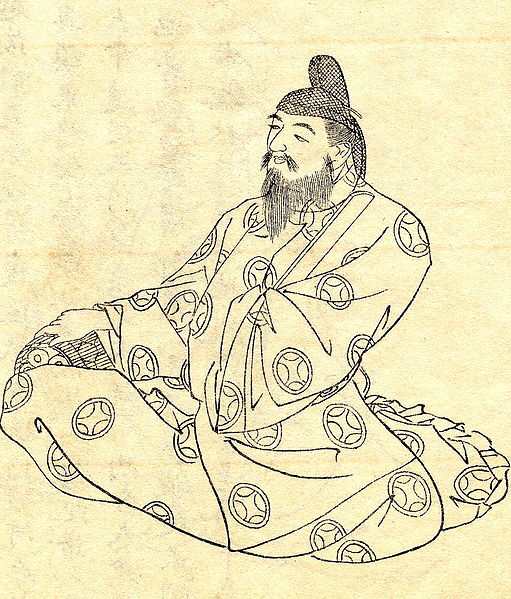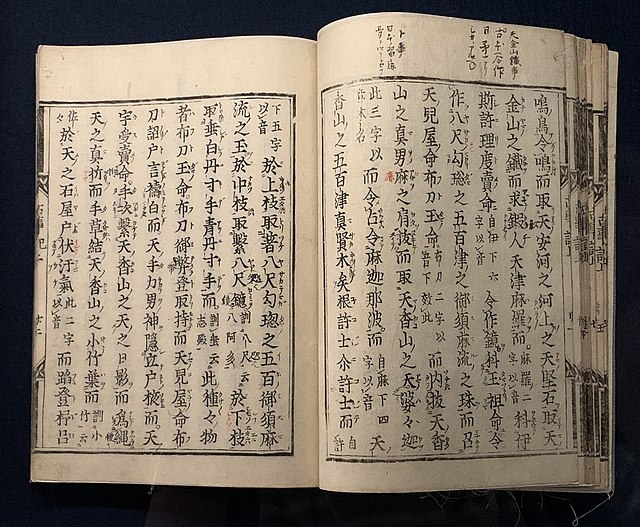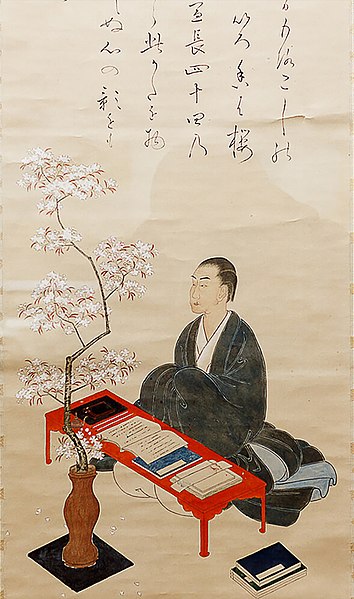Emperor Hanzei aka Emperor Hansho was the 18th Emperor of Japan, according to the traditional order of succession. Both the Kojiki, and the Nihon Shoki recorded events that took place during Hanzei's alleged lifetime. No firm dates can be assigned to this Emperor's life or reign, but he is conventionally considered to have reigned from 406 CE to 410 CE. His family included an "Imperial Lady", and "Concubine" which bore him 4 children. Historians have stated that while nothing remarkable took place during Hanzei's brief reign, he did have ranked concubines which is an introduced Chinese custom.
Memorial Shinto shrine and mausoleum honoring Emperor Hanzei
The Kojiki , also sometimes read as Furukotofumi or Furukotobumi, is an early Japanese chronicle of myths, legends, hymns, genealogies, oral traditions, and semi-historical accounts down to 641 concerning the origin of the Japanese archipelago, the kami (神), and the Japanese imperial line. It is claimed in its preface to have been composed by Ō no Yasumaro at the request of Empress Genmei in the early 8th century (711–712), and thus is usually considered to be the oldest extant literary work in Japan.
Portrait of Ō no Yasumaro by Kikuchi Yōsai (19th century)
Kan'ei Kojiki, 1644 (Kokugakuin University)
Kojiki-den by Motoori Norinaga
Motoori Norinaga





